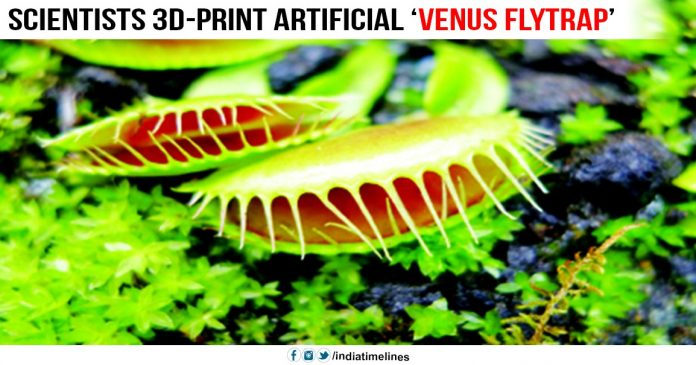
Scientists 3D-print artificial ‘Venus flytrap’: Scientists have created a 3D printed artificial version of the Venus Flytrap Plant that can select selected items in response to external, environmental signals without the need for any type of battery, circuit or processor.
This technology can pave the way for aquatic pollution monitoring devices, which can be designed to open and collect a sample only in the presence of an oil-based chemical, and when the temperature exceeds a certain limit.
Scientists 3D-print artificial ‘Venus flytrap’
Even without the brain or nervous system, Venus flytrap makes refined decisions about closing on potential hazards, as well as when it has been caught by mistake, it should not be opened for eating. Researchers at the University of Pennsylvania in the US have taken inspiration from these types of systems.
Embodied logic
Using stimulating-reactive materials and geometrical principles, they have prepared structures that have “Embodied logic”. Through their physical and chemical makeup, they are able to determine what are possible reactions in response to their environment.
Despite not having any type of motor, battery, circuit or processor, they can switch between several configurations in response to predetermined environmental signals such as humidity or oil-based chemicals.
For example, using these principles, researchers have pronounced an artificial venus flytrap that closes only if one weight is inside and the actuator is exposed to a solvent. Using sequential contagious logic and two types of actuators, this box has a lock which is opened with the presence of water, and a lid which is opened with the presence of a solvent.
Structures with “embodied logic” can be even more complex behaviors, all without motors or computers. According to Jordan Ran of the University of Pennsylvania, there may be other applications of this type of system, which led the study published in Nature Communications.
Embodied Logic: Scientists 3D-print artificial ‘Venus flytrap’2
“Instead of using a solid-state sensor and microprocessor, who are continuously reading what is flowing in the microfluidic chip, we can design a gate for example, which automatically stops if it is a Detects definite contamination, ” said Raney.
Other possible applications may include remote, harsh environments such as deserts, mountains, or other planets.
Without the need for a battery or computer, these embodied logic sensors can remain inactive for years without human interaction, only do the springs in action when presented with the right environmental cue.





































